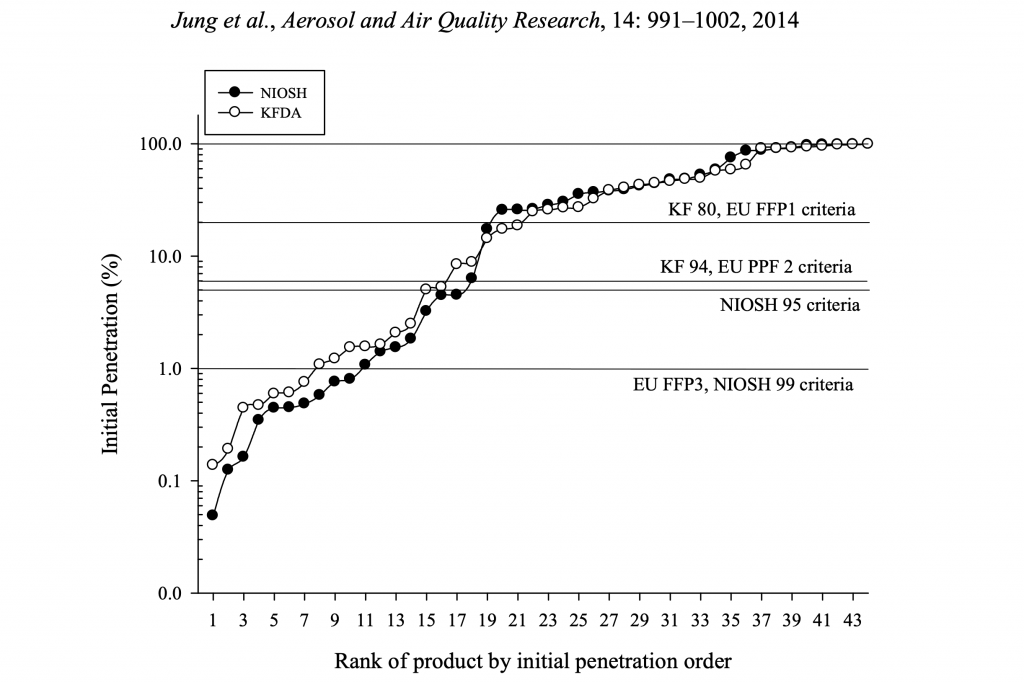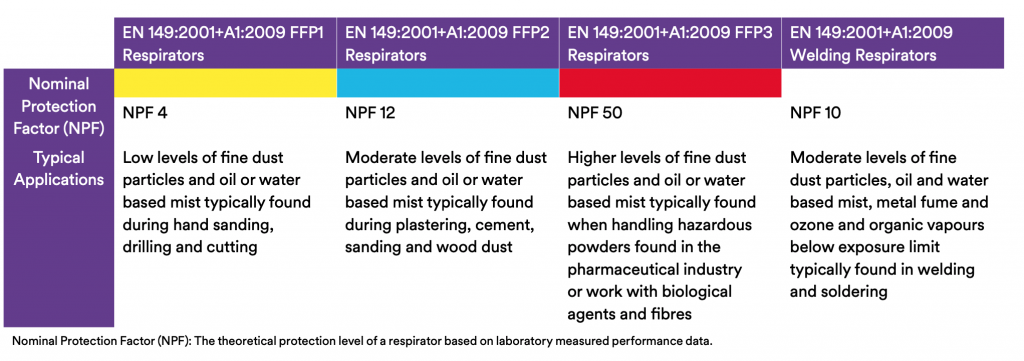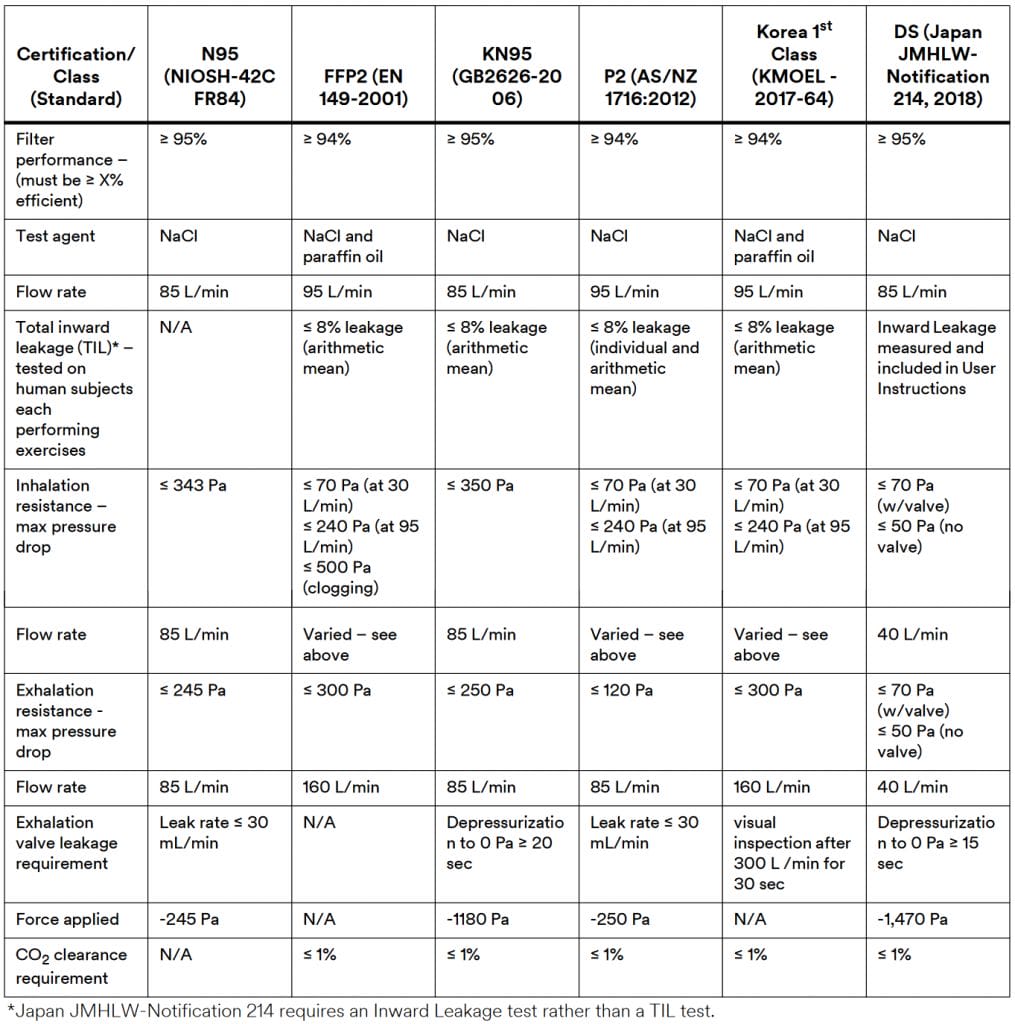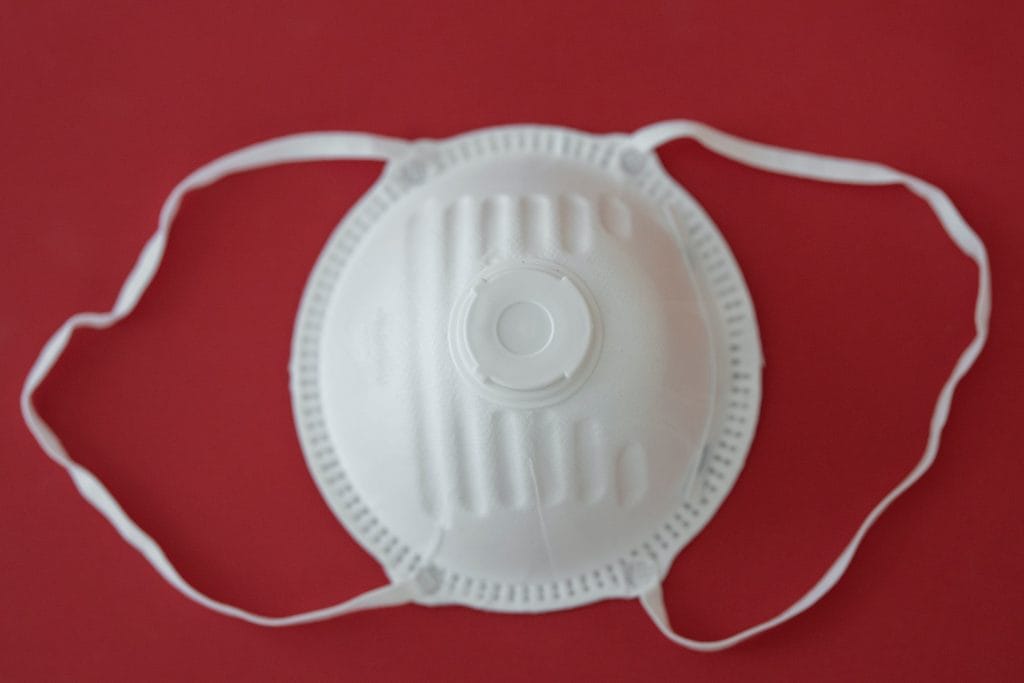Although nearly everyone has heard about N95, N99 and N100 respirators, there are actually far more respirators out there.
There are five other rating systems used globally and three of thefm are quite wide-spread.
I have already covered the Chinese KN95 standard and the Korean KF94 standard. In this article however, I want to address another very commonly found system – the European FFP system.
The FFP system encompasses three different levels – FFP1, FFP2 and FFP3. Although I will mention FFP2 respirators a lot in this post (as it’s the most common level and is comparable to N95), I will also look at FFP1 and FFP3.
This post contains affiliate links. For more information, please refer to my affiliate disclaimer.
Information on this blog is for informational purposes only. Readers are encouraged to confirm the information herein with other sources. Furthermore, this information is not intended to replace medical advice from professionals. This website assumes no responsibility for the accuracy of the information, which is subject to change without notice.
Purchase FFP Respirators: FFP2 Respirators | Alternate Link | FFP3 Respirators
What Is FFP2?
The European FFP ratings are a system designed by the European Committee for Electrotechnical Standardization and are designed to follow the EN149:2001+A1:2009 standard (3M).
European EN respirators follow a three tier level system – FFP1, FFP2 and FFP3. FFP1 provides the lowest protection, while FFP2 performs similarly to an N95 respirator and FFP3 performs similarly to an N99 respirator.

Comparison of Filtration Efficiency and Pressure Drop in Anti-Yellow Sand Masks, Quarantine Masks, Medical Masks, General Masks and Handkerchiefs (source).
FFP1 respirators are intended to provide 80% filtration, FFP2 94% and FFP3 99%. They are also intended for use in different applications.
FFP1 are intended for lower levels of fine dust (days with a lower AQI), and low levels of oil or water based mist (please refer to the image below for more details).
FFP2 are intended for higher levels (moderate) of fine dust and higher levels of oil and water based mist.
Finally, FFP3 are intended for higher levels of fine dust (such as hazardous levels on the AQI scale) and biological agent and fibre mists.
‘The higher the number, the better the protection. FFP1, FFP2 and FFP3 respirators can reduce the amount of dust you breathe by factors of 4, 10 and 20 respectively.
FFP1, FFP2 and FFP3 are designed to filter out dust only. They must not be used where there is an oxygen-deficient atmosphere or harmful gases and vapours’ (HSE.UK).

Disposable Particulate Respirators, 3M.
Of course, it’s important to remember that these are only the protection levels that the respirators are made for.
For this level of protection professional fit testing is required. Respirators will only have limited filtration effectiveness without this training.
In comparison to NIOSH rated respirators, FFP1 is sub-par to N95. While an FFP1 respirator will provide protection from fine dust, the protection it provides is lower than an N95 respirator.
FFP2 is slightly less effective than N95, but the difference is only 1% filtration under testing. For the average user, FFP2 and N95 will function much the same.
FFP3 is comparable to N99 and both provide 99% filtration of fine dust particles at 0.3 micrometres.
As with NIOSH ratings (N95, N100, P100, etc), the FFP2 respirator is by far the most commonly found. While it’s possible to find FFP1 and FFP3 respirators, the FFP2 standard is the most common – similar to how N95 is far more common than N99 and N100.
Xiaomi Purely review. Fan-powered respirator rated KN95.
Characteristics of FFP2 Respirators

Respro offers reusable respirators up to FFP3.
European EN rated respirators follow many of the characteristics of other respirators such as N95 and Kf94 respirators.
This means that a standard FFP1, FFP2, or FFP3 will have either ear bands or a head band to keep it in place. There will be a wire nosepiece, and there should also be some writing on the exterior of the filter stating the standards that the respirators adheres to.
Similarly to other respirators, this also means that they are disposable (unless otherwise stated) and can not be washed. The typical life of an EN respirator differs, and different manufacturers and models will have different guidelines.
However, the average period of use recorded by manufacturers is 3 hours (for FFP3) (OUH). 3M also recommends ‘Discard and replace the respirator if it becomes damaged, breathing resistance becomes excessive or at the end of the shift’ on their Aura series of respirators (3M).
Of course, when it comes to fine dust, there is less need to replace respirators every use. While there is currently no single guideline that I can find in regards to their lifespan with air pollution, it is best to replace a respirators when breathing resistance becomes difficult to breathe through, or when the respirator gets damaged (deformed, soiled, or damp).
How long a respirator provides lower breathing resistance depends on the air quality – if the AQI is around 50 you can expect to wear a respirator longer than if the AQI is 200.
You should remove and dispose of the mask if:
- The mask becomes uncomfortable
- Breathing becomes difficult
- The respirator is damaged or distorted
- The respirator becomes obviously contaminated by respiratory secretions or other bodily fluids
- A proper face fit cannot be contained (OUH)
When storing a respirator make sure to do so in a way that it can’t be deformed or damaged. European EN rated respirators can not be washed and should not be reused.
Purchase FFP Respirators: FFP2 Respirators | Alternate Link | FFP3 Respirators
Is FFP2 Better Than N95?

3M’s Comparison of FFP2, KN95, and N95 and Other Filtering Facepiece Respirator Classes.
Generally speaking, FFP2 performs very similarly to N95. When it comes to particle filtration, the difference is only 1%.
This means that for anyone looking for fine dust protection, FFP2 and N95 are very comparable (PubMed).
FFP1 provides less filtration capabilities and can be expected to perform significantly worse than an N95 respirator. These are meant for lower levels of fine dust or mist.
FFP3 respirators on the other hand perform closer to N99 respirators which provide 99% filtration against fine particles.
In short, FFP2 is comparable to N95 in most situations. However, FFP2 respirators are not generally better than N95 respirators.
The N95 standard is slightly stricter in regards to filtration and N95 respirators perform slightly better. However, for public use this most likely won’t be noticeable.
FFP3 respirators are, on the other hand, perform better than N95 respirators and provide more protection. They are comparable to NIOSH rated N99 respirators and perform worse than N100 respirators.
For a full comparison of respirator ratings and how they compare to other systems, please refer to this post on respirator rating systems.
Read More: Fashionable Fine Dust Mask
Where can I Purchase FFP2 Respirators?

FFP1, FFP2, and FFP3 respirators can be purchased from all major retailers – especially those online. If you want to purchase FFP2 respirators check out Amazon, Ebay, or Gearbest.
FFP2 respirators may be harder to find at local retailers, at least outside of the EU. This is due to the fact that the European EN standard is not the same standard that is used in the U.S or other countries.
Rather, you will probably find N95 respirators far more common in the U.S, KN95 far more common in China, and KF94 far more common in Korea.
However, the internet always has supplies, and it’s possible to purchase FFP2 respirators when needed.
Read More: Totobobo self fit-tested mask.
Conclusion – FFP Respirators

Although most people only recognise the NIOSH standard, it’s far from the only respirator system out there. The European EN standard is also a very common standard and one with many quality respirators.
Although FFP1 respirators provide less filtration than any mask in the N, R or P standard, they are still better than surgical masks, and most definitely better than no mask.
FFP2 are comparable to N95 respirators and you can usually expect them to be of very similar quality.
FFP3 respirators are the best that the European EN standards offer, and these are roughly equivalent to an N99 respirator.
If a respirator has an EN rating (FFP1, FFP2, or FFP3) then you can rest assured that it is protecting you from at least some percentage of fine dust.
Purchase FFP Respirators: FFP2 Respirators | Alternate Link | FFP3 Respirators
FFP2 FAQ
Are FFP Respirators Reusable?
No, FFP1, FFP2 and FFP3 respirators are not reusable. The average period of use recorded by manufacturers is 3 hours (for FFP3) (OUH). 3M also recommends ‘Discard and replace the respirator if it becomes damaged, breathing resistance becomes excessive or at the end of the shift’ on their Aura series of respirators (3M).
Can You Wash FFP Respirators?
Up until the recent respirator shortages the answer to this was no. However, due to a lack of supply, methods are being investigated recently into disinfecting and cleaning respirators. Although still under investigation, the promising methods are currently cleaning with hydrogen peroxide vaporization, UV treatment, moist heat and dry heat (Sages).
What Does FFP2 Mean?
FFP2 is a term used to refer to the middle-tier of respiratory protection in the European EN Standard system. FFP2 respirators provide moderate levels of fine dust protection and a moderate level of oil and water based mist protection (3M).
Can FFP2 Masks Expire?
Yes, FFP1, FFP2 and FFP3 respirators can indeed expire. Make sure to check the expiry date before purchasing or wearing any respirator, whether N95, FFP2 or KF94.
Have Questions or Comments?
Join the discussion on the BreatheSafeAir Community Forum. Ask any questions you have about air quality or adjacent topics and get quick answers!
Very interested to read. But today when we are talking about masks we think about covid.
I can only read a lot about how different masks cover you from dust.
So my question is if there are any masks that protect you from covid-19.
The question arround biological protection is valid and an area greatly ignored until a disaster happens.
The SARS-COVID-19 virus is relatively big, about 109 nanometers. The smallest virus known is 2 nm. Compare this to TB which is 600nm. Internationally there is only one standard which has a validated method for generating and quantifying bacterial spores. The sodium and paraffin vapours used in NIOSH and EN standards is 300 – 600nm and is electrically neutral whereas all micro-organisms have an electrical field. I’ll be happy to share more information if you are interested